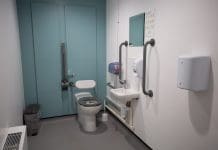Accurate estimates and transparent processes are essential in construction. By adopting digital tools, estimators and fabricators can ensure precision and improve communication among stakeholders, explains Trimble Viewpoint
With rising material costs and an increasingly competitive landscape, estimators and fabricators need to use everything they can to gain an advantage over their competitors.
One way in which this can be achieved is through the incorporation of digital technologies into their workflows, allowing for more accurate work and better transparency across all stakeholders.
If you missed our second webinar in the Concept to Construction series, then read on, as we discuss the highlights…
Transitioning from concept to construction
Following on from the initial concept and design phases of construction, the next stages involve estimators and fabricators.
The estimation and fabrication phase of works can often be complex, with a range of costs, large amounts of material, tight specifications and deadlines all to be considered.
With this in mind, adopting a digital workflow can be invaluable, allowing all of this information and data to be condensed into one software suite, for ease of access, visibility and transparency.
Estimators: enhancing accuracy and efficiency
When looking to provide an initial estimate or project bid, it’s important that estimators are both thorough and accurate.
Otherwise, they run the risk of damaging their all-important profit margin, or even missing out on work entirely due to producing a bid that is too high.
Traditionally, many estimators would rely on spreadsheets, requiring constant updating and manual reformatting to ensure they reflected the project requirements and market conditions.
However, through the use of a digital MEP estimating software package, such as Total Estimating, users can easily circumvent this and provide more accurate quotes.
Using cloud-based applications, like Total Estimating, offers flexibility and security, with the ability to quickly calculate quotes to send to suppliers and also collaborate with the wider team.
Having access to manufacturer-specific content via the integrated Luckins database can push the accuracy levels even further, providing estimators with accurate and up-to-date prices and labour fit times to ensure their quotes are precise and up to date.
Through the use of digital workflows at the concept and design phase, the streamlined flow of data can continue into the fabrication phase of works, using Tekla PowerFab.
With the ability to access information-rich 3D models, estimators and fabricators can automatically generate quantity take-offs and material lists direct from the design model.
Providing the model and its data is correct, you can rely on the fact that your cut lists and schedules will also be accurate.
This can be taken further through the use of Viewpoint for Projects, allowing estimators and fabricators to easily import and export the important meta data they need directly from Trimble Connect, allowing for a more accessible flow of data.
Fabricators: connecting the workflow
Moving onto fabrication and a digital workflow continues to deliver numerous benefits, connecting and offering visibility of the whole fabrication process, from estimating through to shipping and installation.
Gone are the days of paper-based systems; with a digital information management system, such as Tekla PowerFab, connecting all processes into a centralised hub and providing unparalleled control of your operations.
Connecting the estimator and fabricator, a full estimate job can be easily exported from Trimble Connect into Tekla PowerFab, listing the parts required.
Following this, workshop managers can begin to manage their entire fabrication process, utilising powerful mobile tools to increase project and production productivity, with industry-leading software and equipment.
With instant visibility, the workload can be easily split into lots, with each lot able to be colourised and seen in the context of its associated 3D model, allowing fabricators to see the order in which materials need to be processed.
Users can also access up-to-date inventories, including what material is in stock, what needs to be ordered and what is currently being processed.
It’s all about taking the data out of the drawing office and into the factory for everyone to use and learn from, with cloud-based software, models and documentation able to be viewed and accessed on multiple devices, whether on desktop, tablet or mobile phone. Consider a saw operator, for example.
They could use a mobile device to access Tekla PowerFab Go and check the cut list, containing all the material they need to cut, as well as access all related models and specification drawings.
Once completed, they can record this digitally, allowing for up-to-the-minute records and progress timelines to be curated.
Benefits of digital technologies
It is through this use of digital technologies that data can be clearly and efficiently passed throughout the project sequence and workforce, from the drawing and engineering office during the concept and design stage, to the estimation and fabrication phases.
By using and building upon this data thread, each contractor and company is able to make accurate and informed decisions, reducing errors across the wider project and improving collaboration between different stakeholders.
Learn more
Did you miss this webinar? Watch the whole three-part series on demand.
Interested in learning more about Trimble’s Concept to Construction workflows? Come visit us across Stand D300 & D400 at Digital Construction Week.














